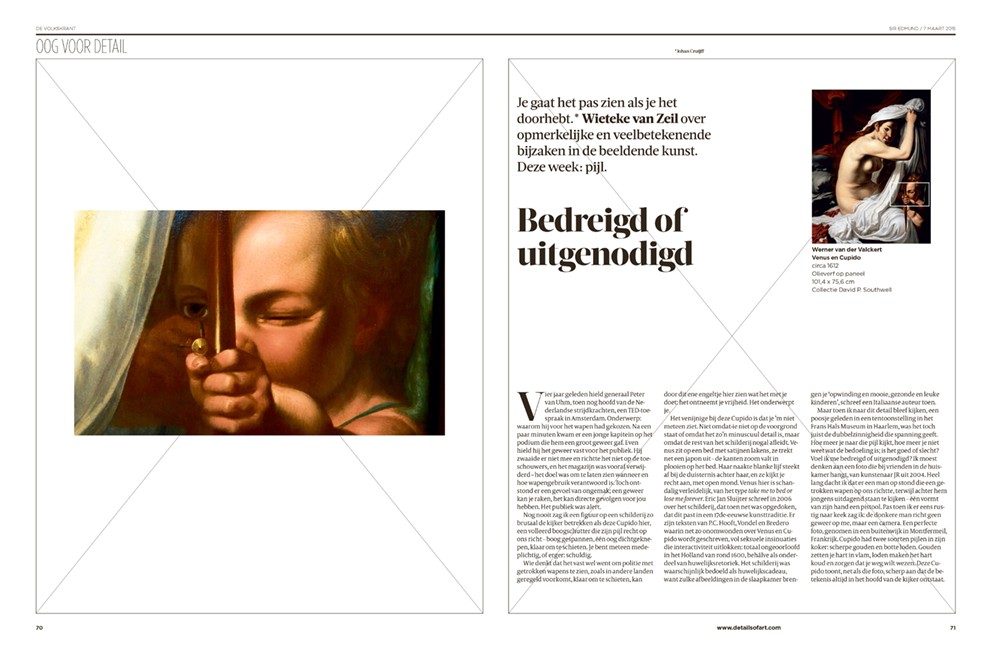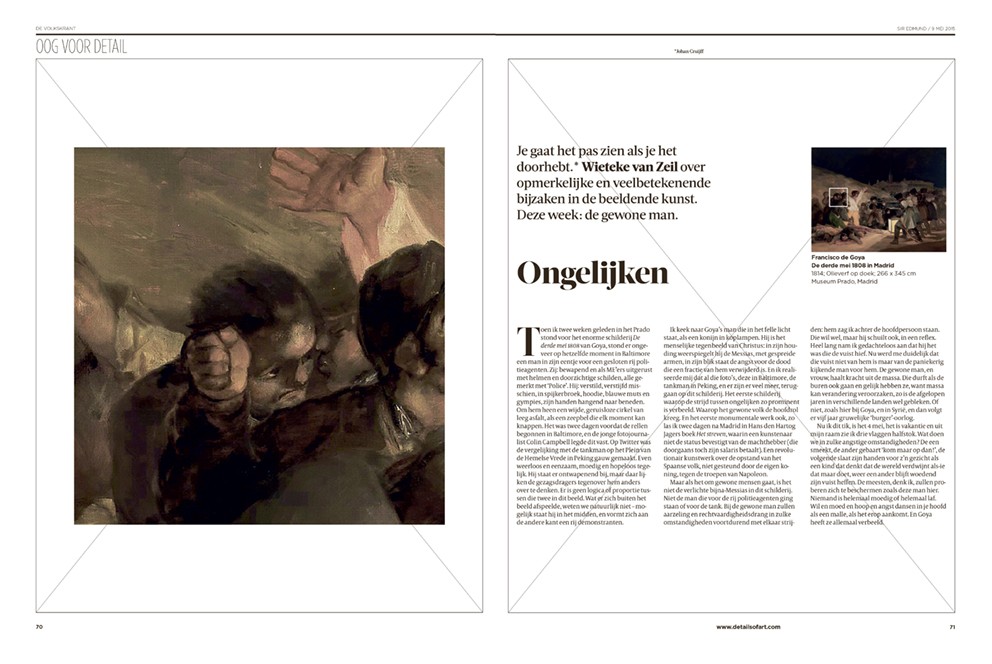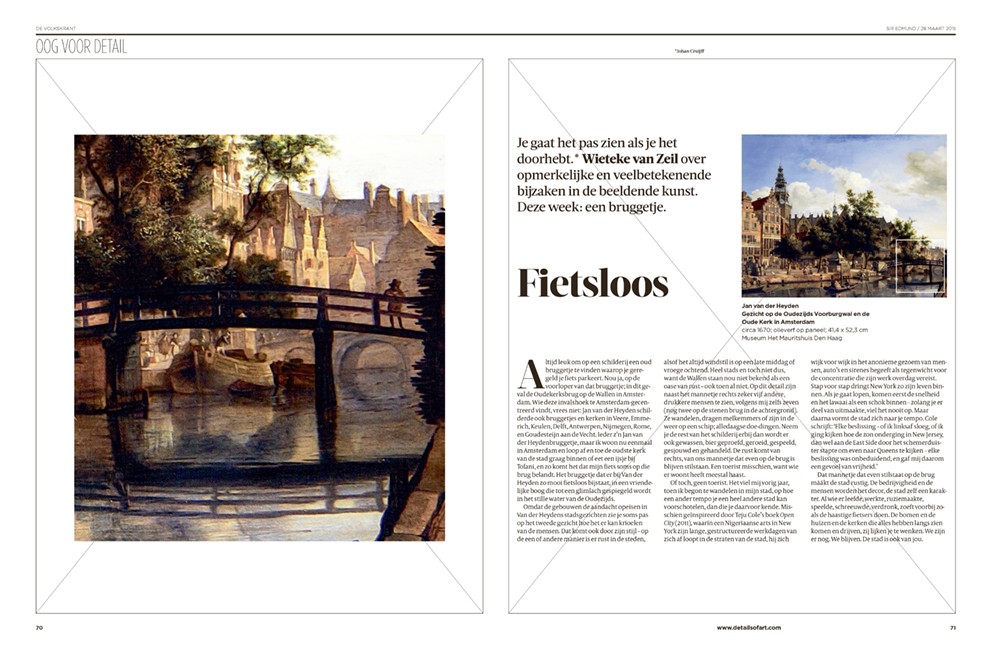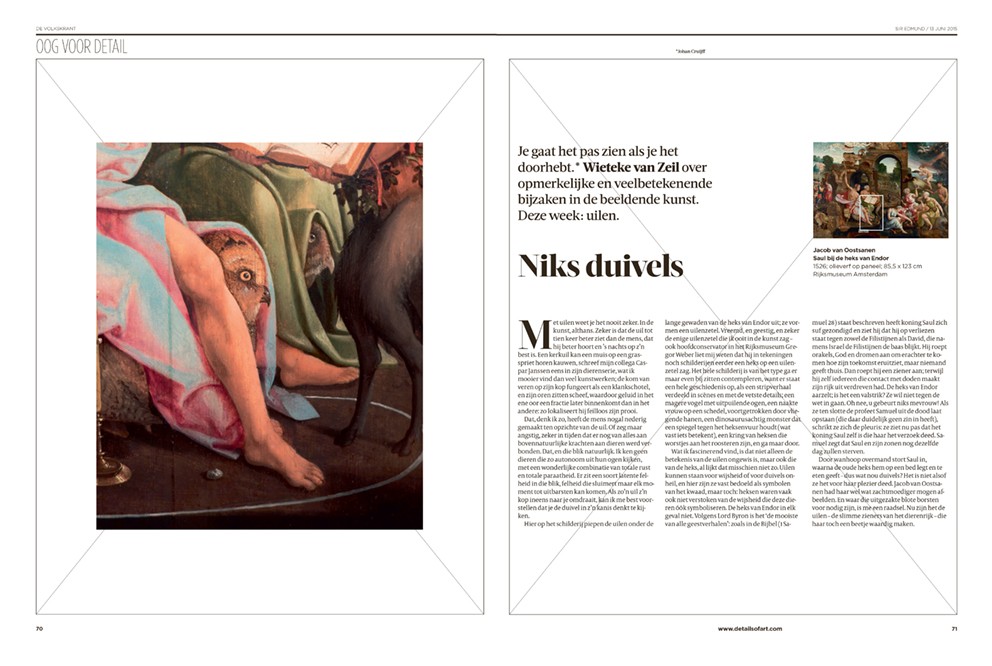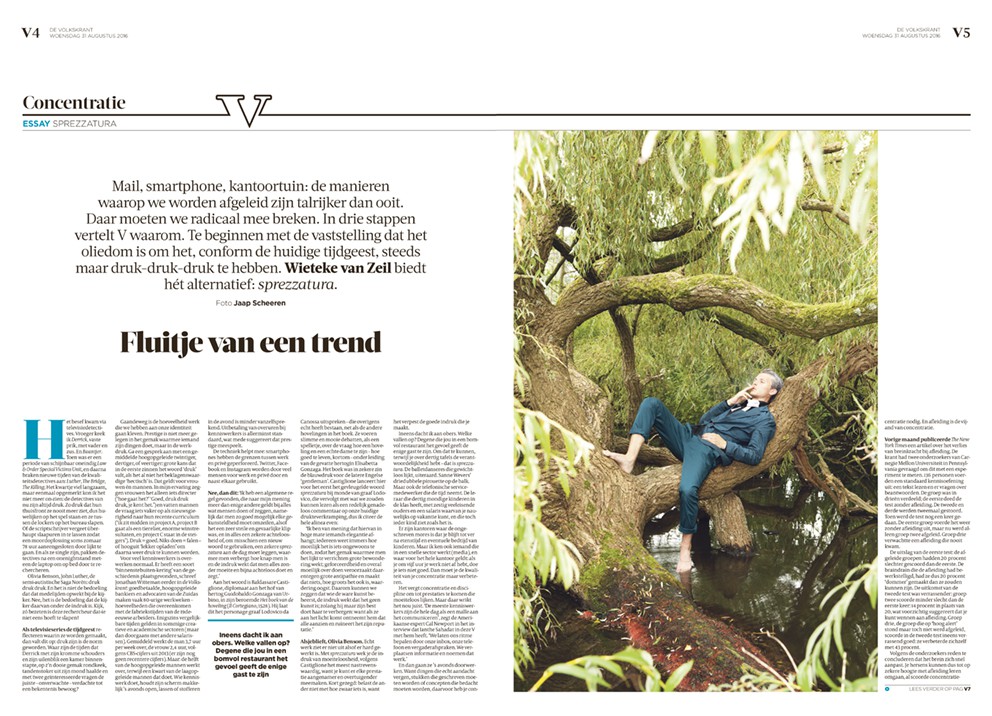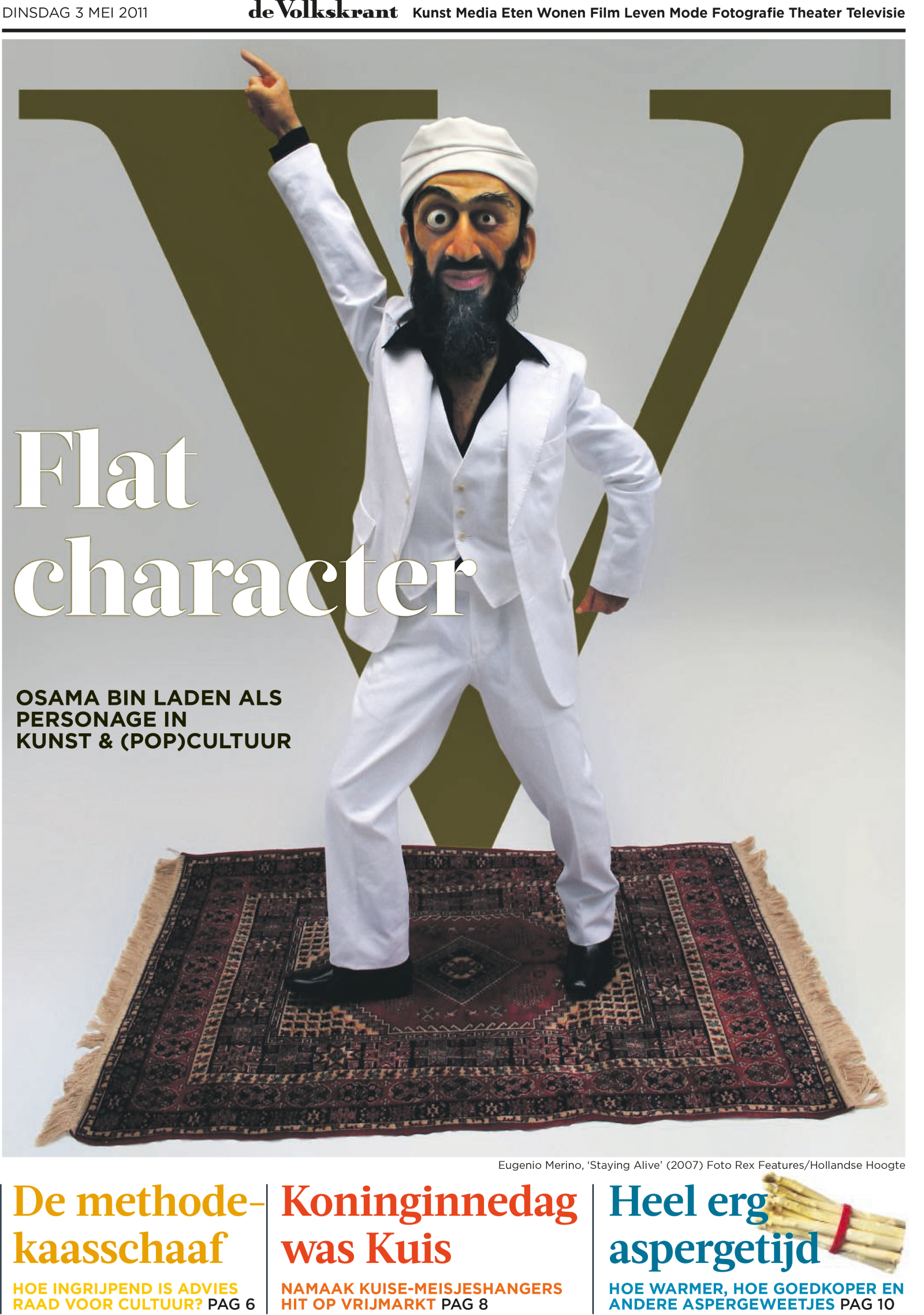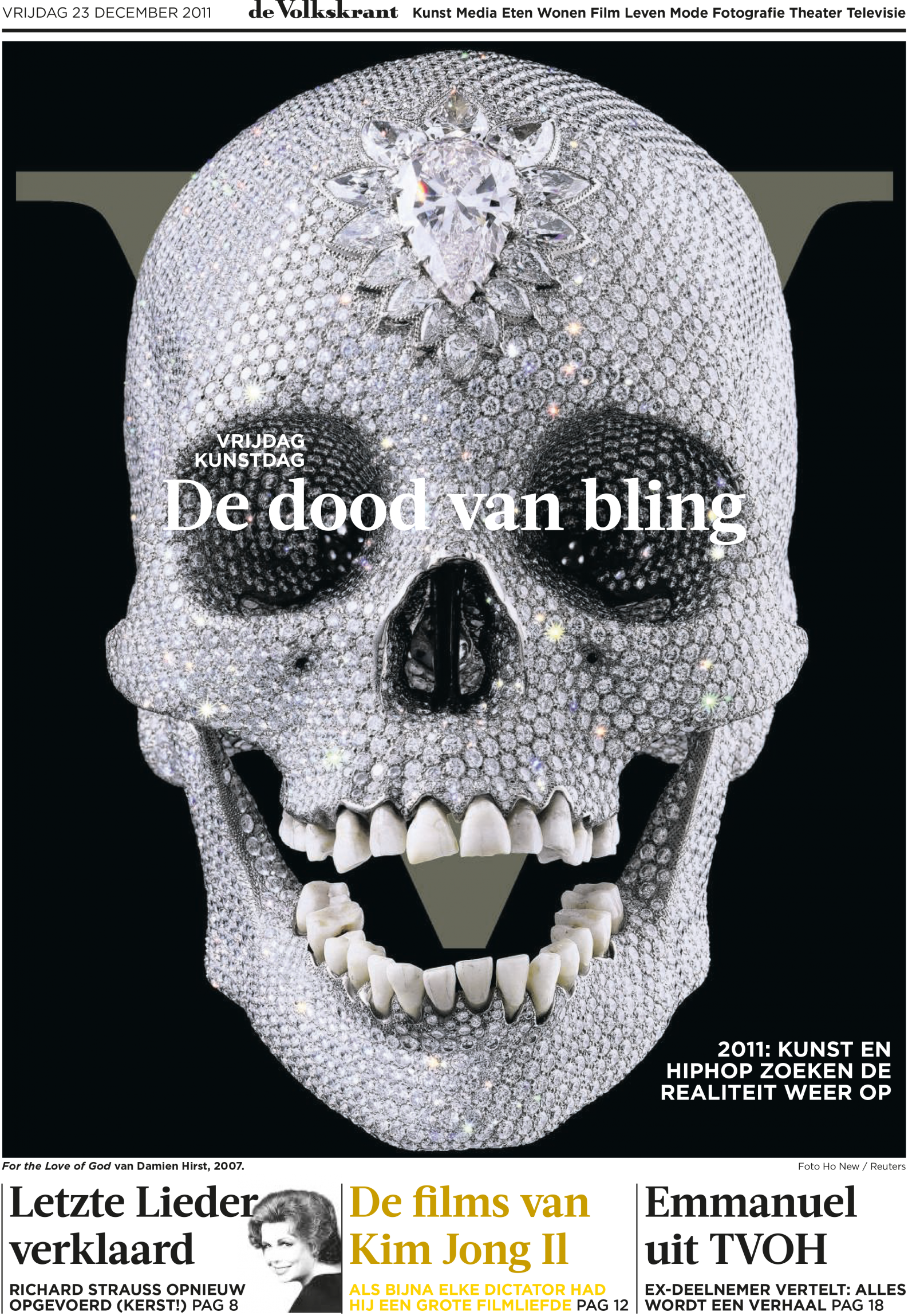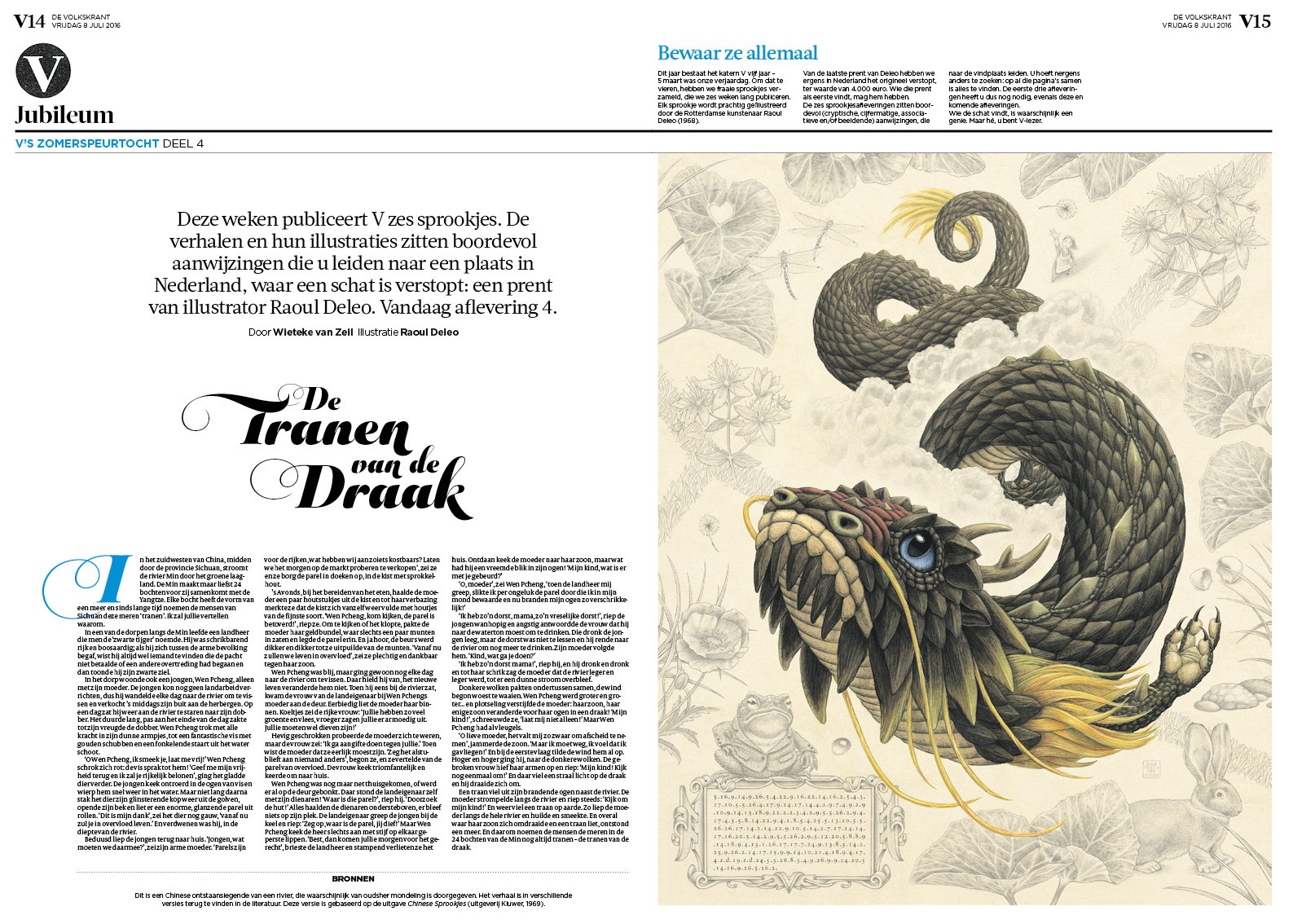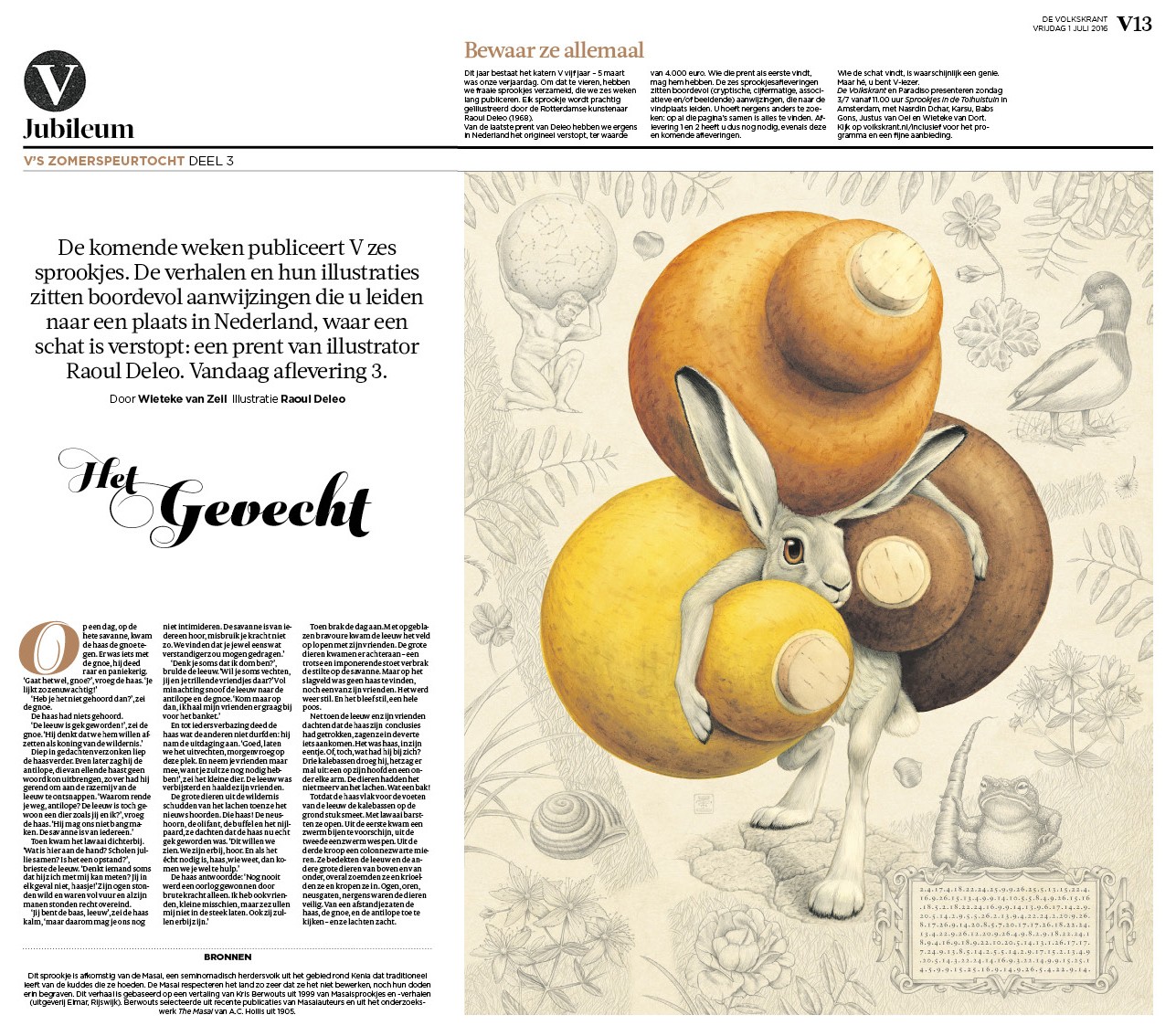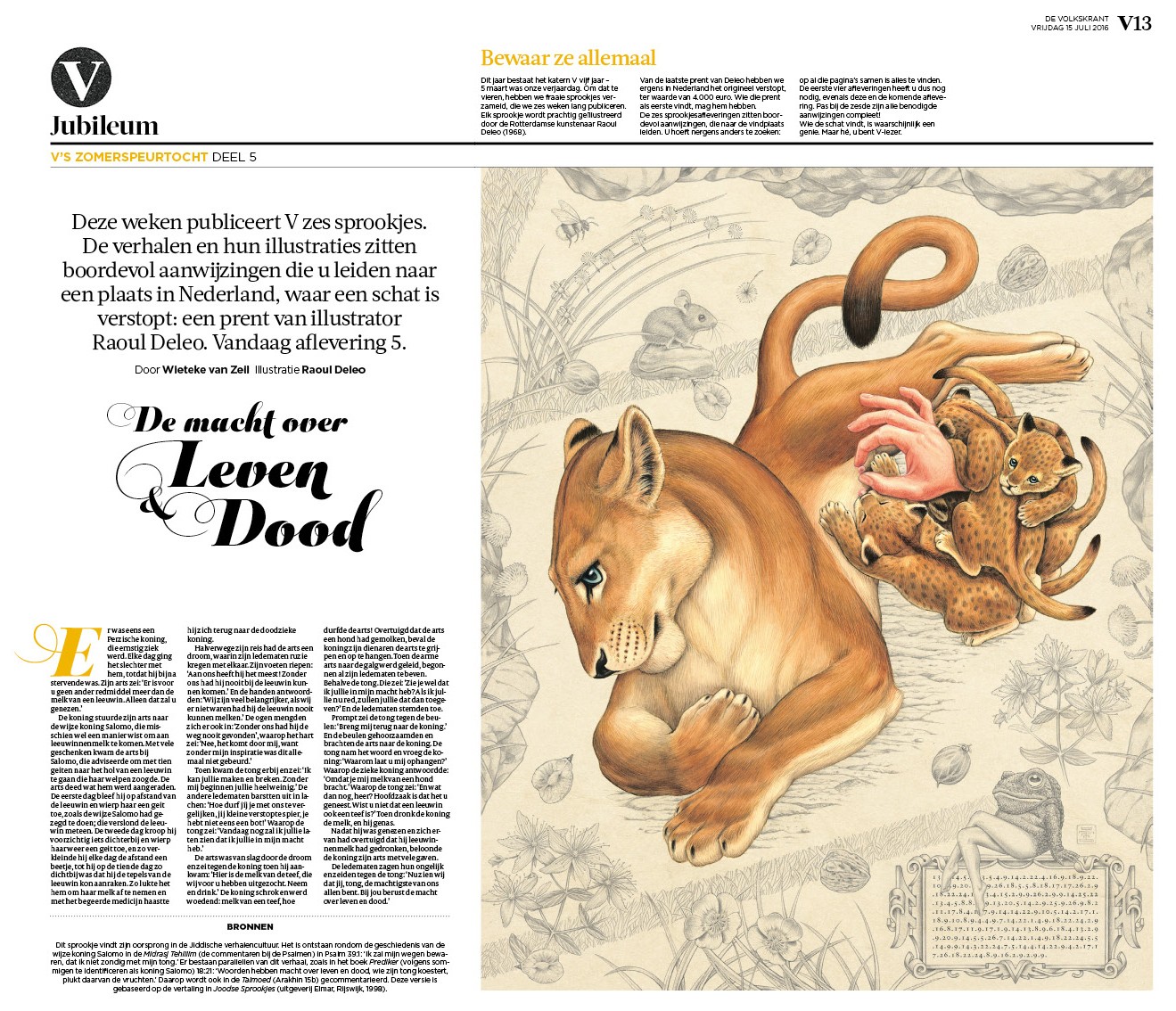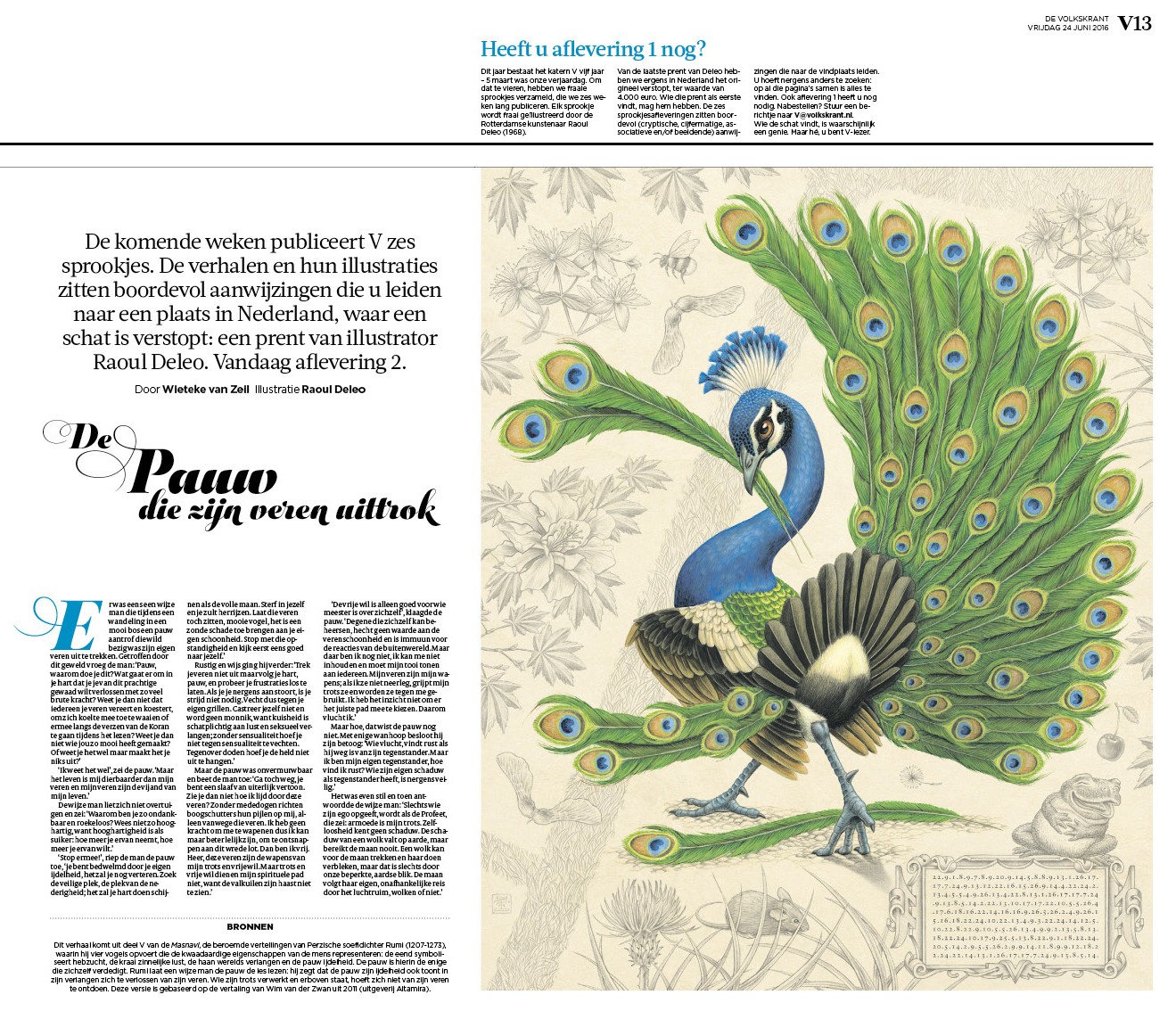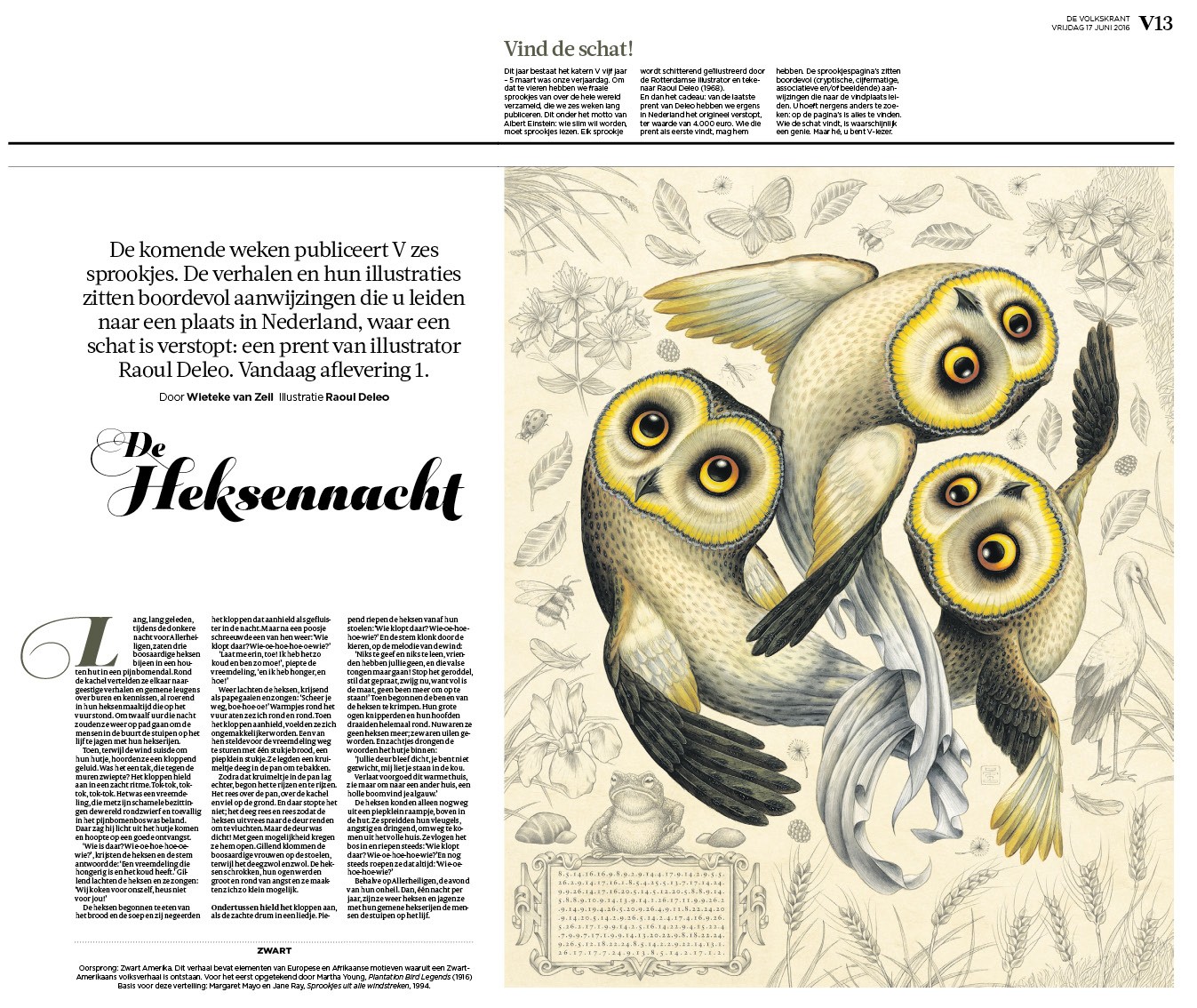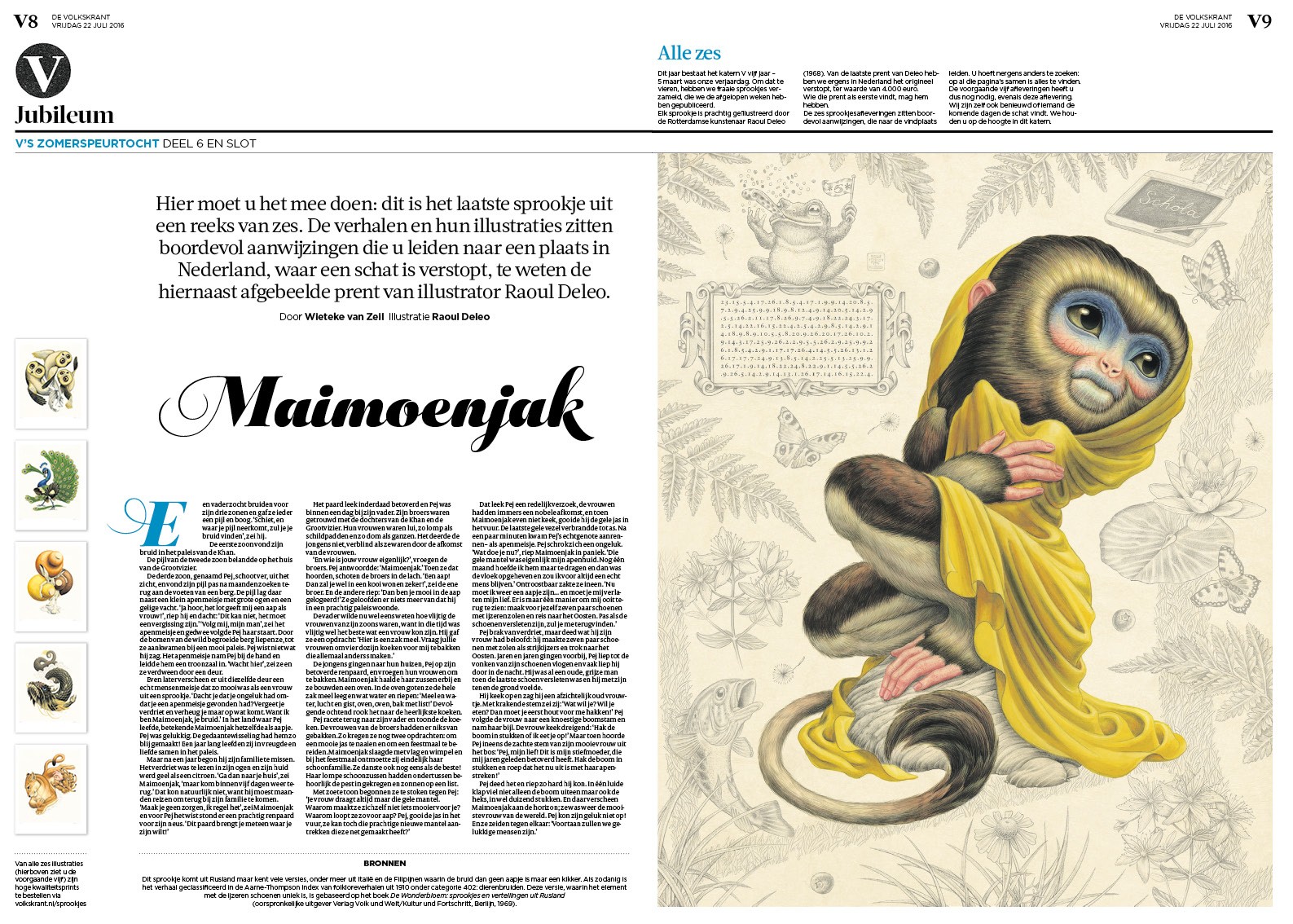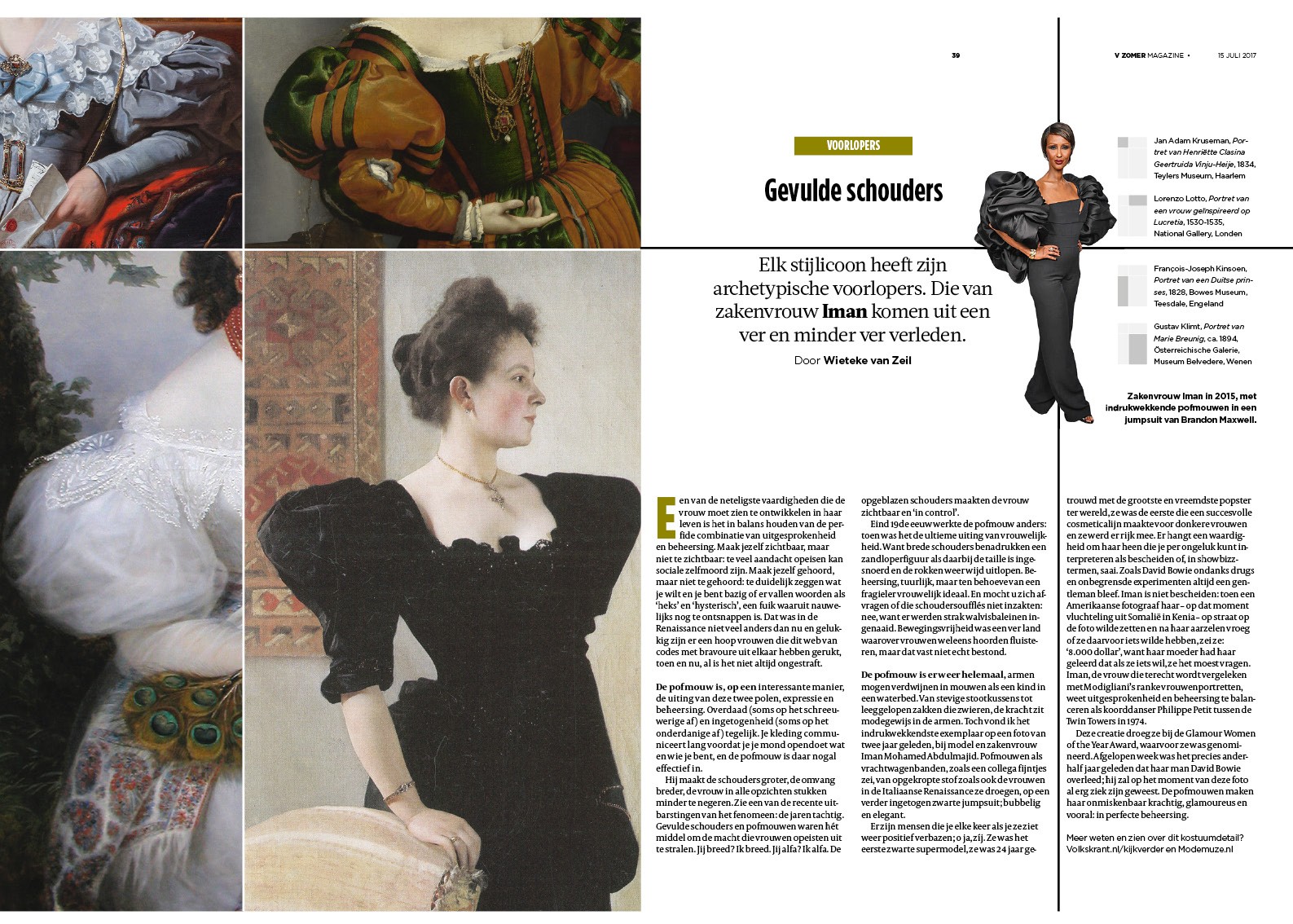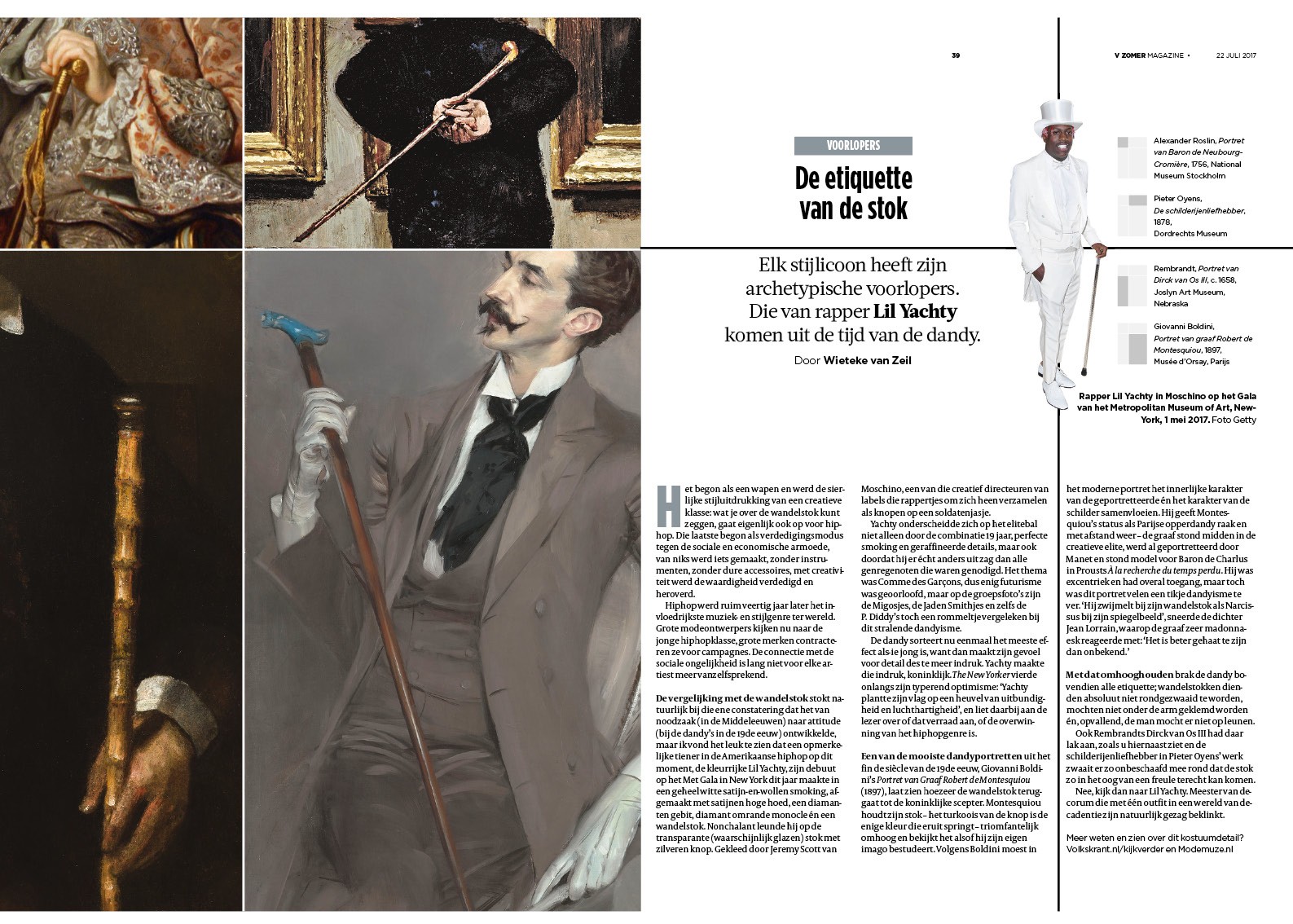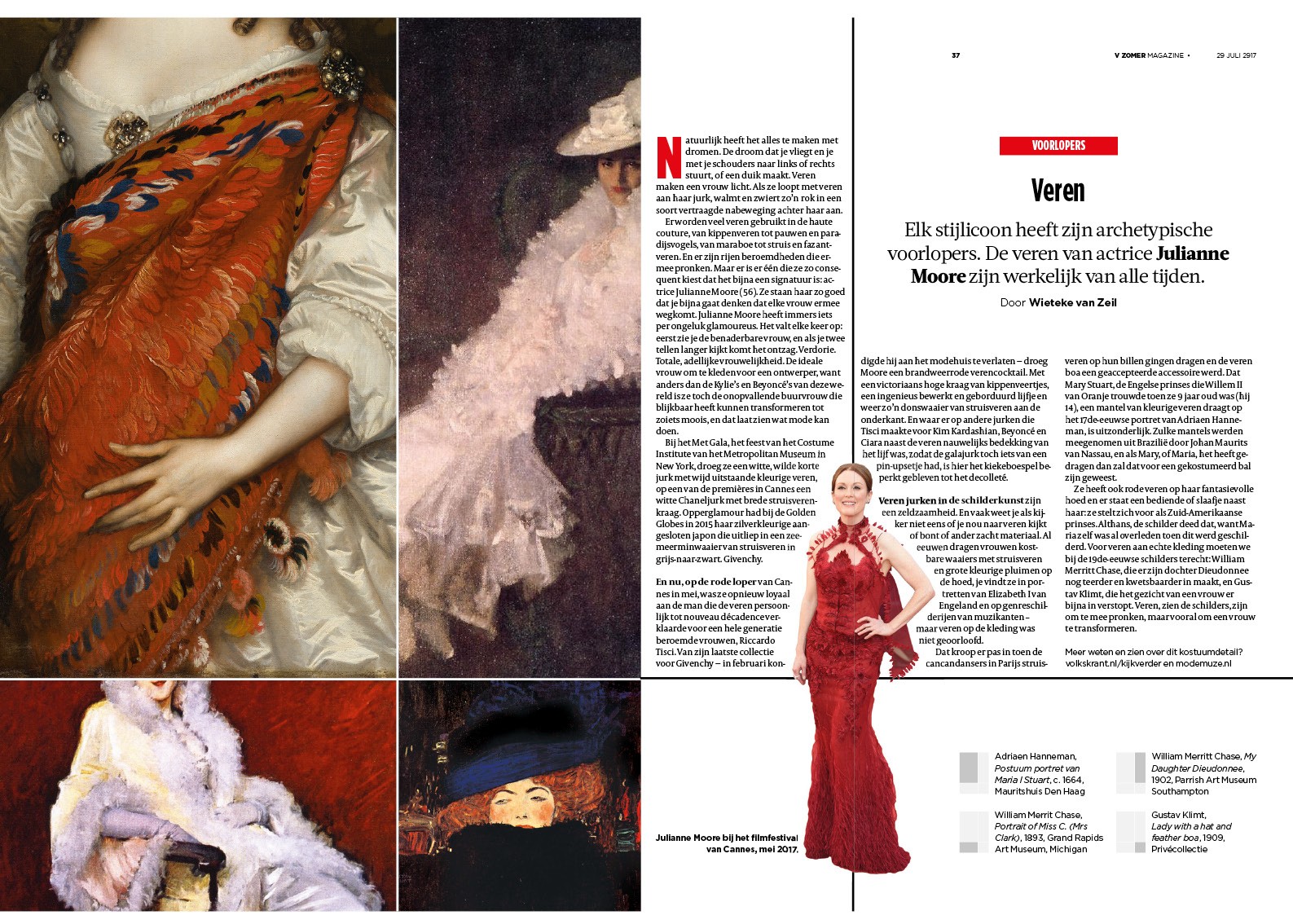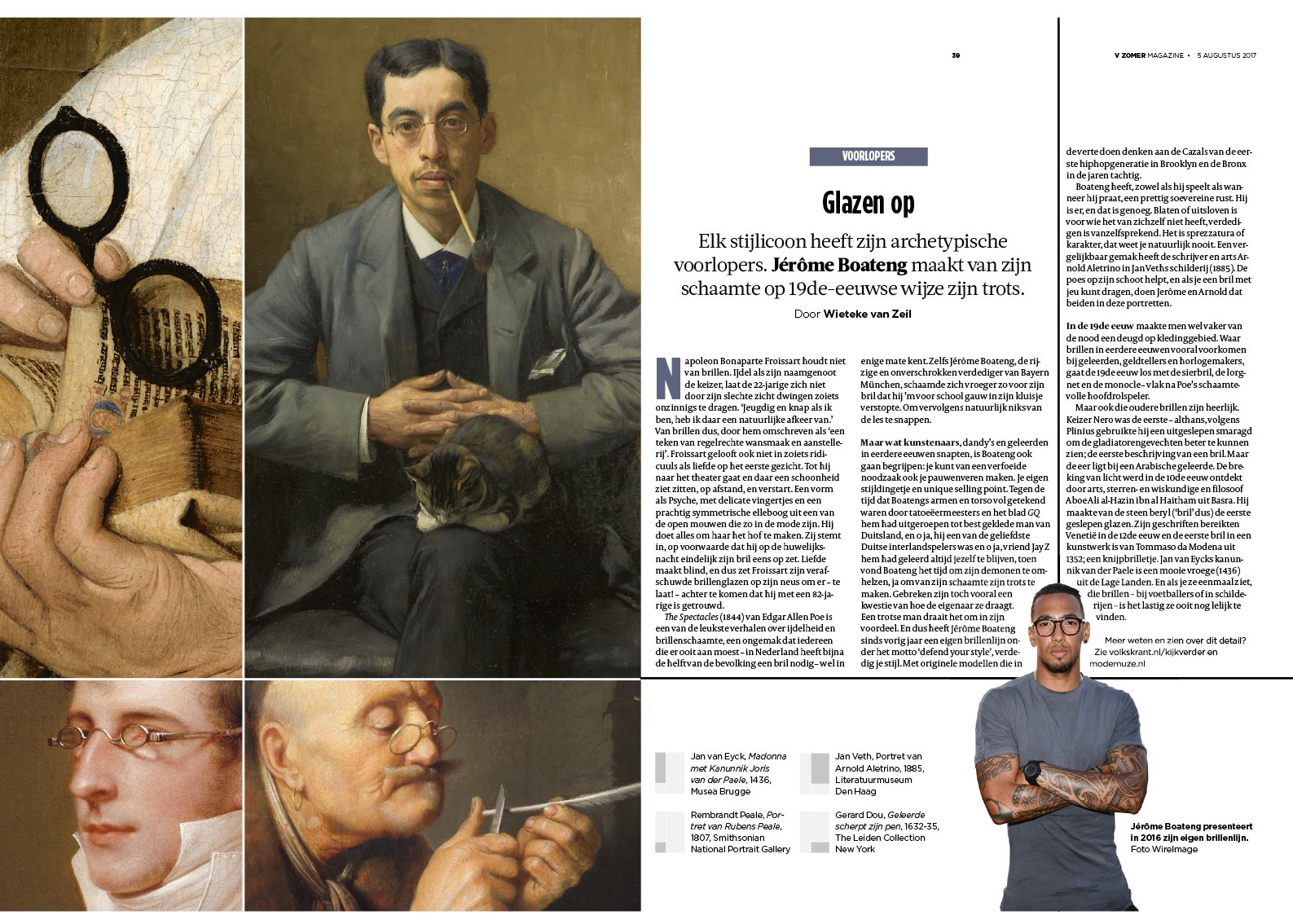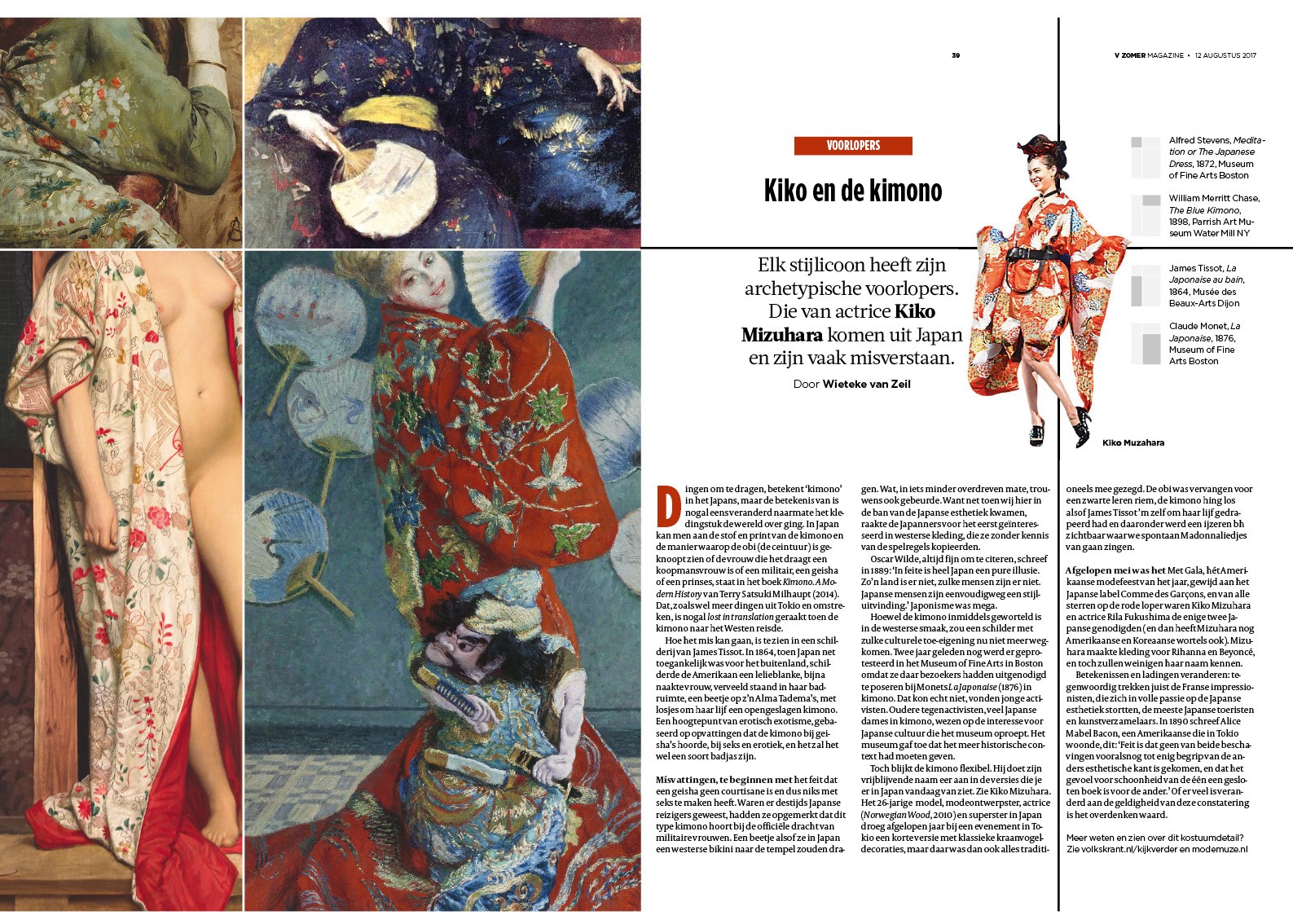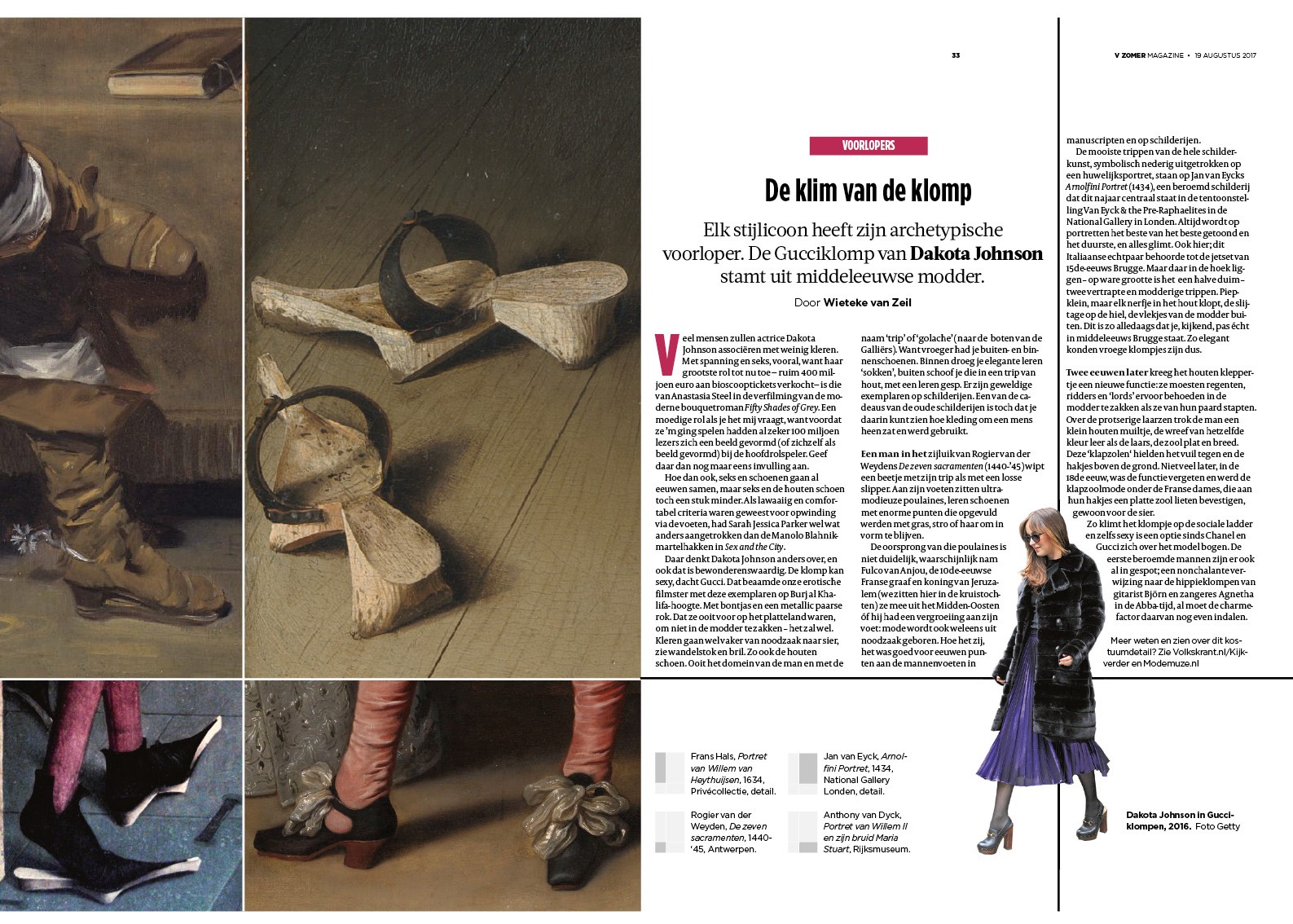Wieteke van Zeil
journalist • art historian • culture critic
Fashion details from Ruben's royal portraits
Wieteke at Canvas Television's Culture Club
“Turn like crazy”
Eye for detail video about chimney's in Amsterdam
"Not only can she observe well, she is also a good writer"
– Elsbeth Etty in NRC about the book "Dichterbij"
Eye for Detail wins a European Newspaper Award
— European Newspaper Awards
Modemuze x Volkskrant
The puff sleeve in costume history, art history and today's fashion
Wieteke van Zeil (The Hague, 1973) is a culture journalist and writer. She has been writing about old masters and today’s culture in the Dutch national newspaper de Volkskrant since 2003. Her articles reveal her sharp eyes and associative mind. After graduating from the University of Amsterdam as an art historian, she worked for several museums and organized debates on art, diversity and religion. For the newspaper's Saturday Magazine, she pens a weekly series about details of art entitled Eye for detail (Oog voor Detail). In the articles she describes and marvels on the act of looking at (art) details. Great works of art can reveal how artists, often hundreds of years ago, saw what we still regularly seem to miss: essential details about how people live and love, struggle and suffer, and how they have fun.
In 2018 her book Seeing is Ignoring: the Art of Attentiveness (Goed kijken begint met negeren, de kunst van opmerkzaamheid) was published by Atlas Contact. Previous works include Up Closer: Art in Details (Dichterbij, kunst in details). In 2015, the Eye for Detail-series was recognized with a European Newspaper Award.
Volkskrant | Instagram | Twitter
Photo: Najib Nafid

Every week, Wieteke discusses a specific detail of an artwork. For these columns she visits museums and collections, taking her time to let the details catch her eye. Artists see what we often fail to notice; every carefully painted tiny detail encapsulates a wealth of knowledge, meaning, and history that connects with our present lives. Their wonderful details spur our curiosity and help us engage with their work. Oftentimes, Wieteke’s explorations lead to discussions with experts on the details’ subjects: a shoemaker, an astronomer or ornithologist, or a goldsmith or weaver.
The Details of Art is part of the Saturday supplement Sir Edmund of de Volkskrant newspaper. In 2015, this column won the European Newspaper Award for Best Editorial Series.
The advantages of Baldassare Castiglione’s 15th-century concept of sprezzatura – a studied effortlessness – for today’s workplace. A study of artworks depicting Christ as a black man, when for the first time in the history of the very popular Dutch television event The Passion a black actor is cast for the role of Christ (and what skin colour did He actually have?). The influence of architecture on the social cohesion in today’s society (and how 17th-century Dutchmen commissioned their best architects to design workhouses and centres for the elderly ‘like palaces’). In her cultural essays, Wieteke links culture and history to current affairs, providing both depth and context, so we don’t get swept up by them.
‘If you want your children to be intelligent, read them fairy tales. If you want them to be very intelligent, read them more fairy tales.’ – Albert Einstein.
All cultures have their own bedtime stories, read to children to playfully offer them guidance, read by adults to open their minds – for a while at least. Old fairy tales often turn out to be quite relevant to current affairs, because they are so archetypal that their moral impact transcends the ages.
To celebrate the fifth anniversary of de Volkskrant’s cultural supplement V, we made a series of the most beautiful fairy tales from 6 different cultures, with illustrations by the unsurpassed Raoul Deleo. Each magical painting included a hidden clue to a puzzle devised by mathematician and comic Jan Beuving. The series won a European Newspaper Award in 2016 for its illustrations.
What is the history of the fashion we wear today, and what did these details and accessories communicate in earlier times?
The series Forerunners, which ran its third season in 2017, is a special summer edition of the Eye for Detail series, solely focusing on fashion details in painting. Every week a fashion detail from art history is connected to a contemporary person wearing that same detail. Forerunners is about what fashion tells us about men and women, and their position in society. And about how in new times and cultures these meanings evolve and change. In 2017, we presented a film with each article together with the costume website Modemuze, in which we went to the museum depot to look for the details in historical costumes.
Altijd iets te vinden gaat over kijkplezier, nieuwe perspectieven, snelle meningen en gewogen oordelen. We hebben over van alles en nog wat een mening, aangejaagd door de dynamiek van sociale media. Maar hoe kom je eigenlijk tot die meningen?
En hoe vaak nemen we de tijd om tot een gewogen oordeel te komen? Kunst kijken kan ons helpen: kunst is geduldig, houdt je nieuwsgierig en verruimt je blik. In tips en beschouwingen over schitterende kunstdetails maakt Wieteke van Zeil inzichtelijk hoe meningen tot stand komen; welke rol bijvoorbeeld je stemming en achtergrond daarbij spelen, en waarom het zo moeilijk is van mening te veranderen. In vijf essays beschrijft ze daarnaast nieuwe manieren om naar kunst, geschiedenis en actualiteit te kijken. Waarom is Jezus altijd wit in de kunst? En hoe komt het dat we nog stééds niet van vrouwelijke kunstenaars houden?
Het sprankelende Altijd iets te vinden nodigt uit tot associëren, reflecteren en bovenal tot meer kijkplezier, of je nu een beginnend kunstkijker bent of een geoefende liefhebber.
Uitgeverij: Atlas Contact
We kijken grotendeels onbewust - en daardoor gaat veel aan ons voorbij. Goed kijken begint met negeren is een gids voor iedereen die beter wil kijken. Wieteke van Zeil laat zien dat kunst daarbij kan helpen: kunstenaars zien immers vaak wat ons nog ontgaat, en ze tonen andere perspectieven dan die we al kennen. In 56 verhalen verbindt ze de mooiste kunstdetails soepel aan ons dagelijks leven. Ze geeft praktische tips om met meer gemak en plezier naar kunst te kijken, onderbouwd met wetenschappelijke inzichten over hoe wij waarnemen. Ook spreekt ze met kijkexperts uit andere vakgebieden over de geheimen van hun opmerkzaamheid.
Van Zeil laat zien dat onvermoede details een nieuwe wereld kunnen openen. Goed kijken begint met negeren maakt je opmerkzamer, in het museum en daarbuiten.
Uitgeverij: Atlas | Contact
Ernst Gombrich, cultural historian, once remarked: ‘One never finishes learning about art. There are always new things to discover.’ In Up Closer, Wieteke van Zeil shows us details in paintings that we might not normally notice. She discusses their symbolism and shares her own associations with us, stimulating us to look more closely.
We live in an information culture in which millions of images fight for our attention. Pausing to examine a detail in a painting can refresh the way we see the whole; this is the idea behind Up Closer, Art in Detail. The book features fifty-two paintings, each with a zoomed-in detail and Wieteke van Zeil’s short observations. She makes connections between the old masters and our modern world, bringing each painting vividly to life. She stimulates our imagination, so that we go on to find other details that aren’t immediately obvious. By concentrating on a cow’s velvety nose , or on men bathing naked in the corner of a seascape, the whole painting not only becomes more stunning, but the viewer will also understand it better. She opens up a world of meaning.
Publisher in the Netherlands: Atlas | Contact

